
XIA is an IoT system, including a smart seat pad and a mobile app, that tracks people's sitting behaviors and helps to build healthier working and sitting habits to avoid back pain and achieve their professional goal.
PROJECT TYPE
Master's Thesis
Individual Project
TIMELINE
April - December 2019
Spring Quarter and Fall Quarter
MENTORS
Elisa Vargas (Motorola Solutions)
Jim Wicks (Northwestern University)
Amy Schwartz (IDEO)
Overview
Problem
"Oh my back!"
Many working young professionals have been suffering back pain brought by sedentary work mode and less effective solutions are wasting their money and time. It's affecting their productivity and mood that leads their performance lower than their expectations.
Specifically, I focused on bridging the gap between people's current understanding and behaviors and the ergonomically good and mindful sitting in the below topics:
1. When should I take a break?
2. How to pose in an ergonomically good way?
3. How long could I sit comfortably until work ends?
Solution
Let's look at one typical workday by using XIA!
The Smart Chair Pad Experience(Video 1'30'')
Challenges
1. The difficulty of making people aware of their sitting habits
people always think they are sitting in a good way until they feel back pain. So building awareness in an easy to remember and stick to way is the first step and an important part of this experience.
2. The difficulty of doing usability testing
Since there are two interactive parts and should have data gather, transit, and visualization processes, so it was hard to run task-driven user testing.
Process
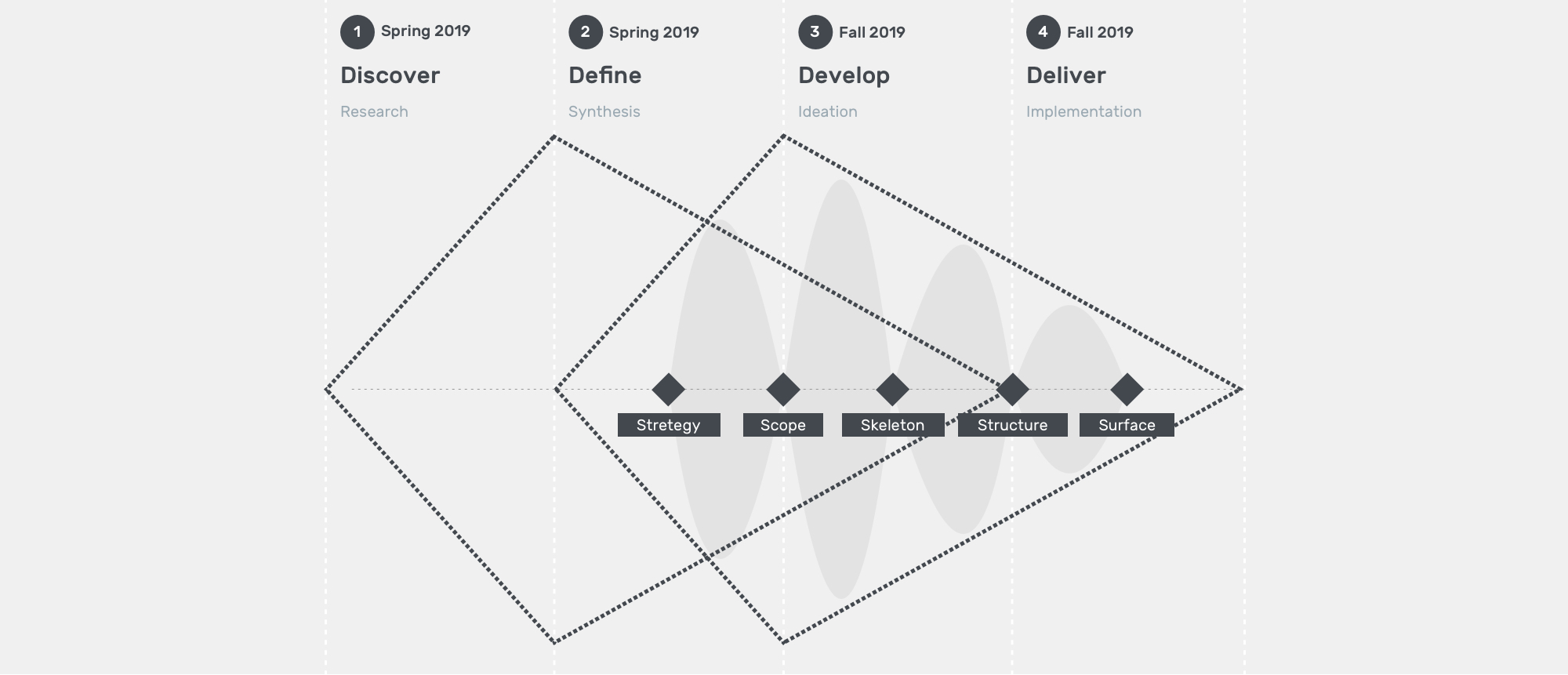
This is my Master's thesis project at Northwestern University that allows me to fully utilized two quarters to go through a Human-Centered Design process from research to deliver.
Discover
Research Process

Research Findings
Key Insights
1. More than one physical and digital touchpoints across time might make people mindful of their sitting and cover all of the factors that result in back pain.
2. Organically Incorporating mobile and fixed activities into people's schedules could be a workable model for preventing back pain.
3. Realizing a bad sitting posture looks humiliating keeps reminding people to keep a good posture in the work environment.
Target User Group
People who have self-diagnosed their work productivity is being affected by back pain and try to solve it by being more mindful of the length of sitting time and posture.
Refined Scope
The goal is to prevent people’s back pain by tracking people’s sitting habits (time, posture, stretch, etc.) and work schedule to build healthier and more productive day-to-day work behaviors.
Pain Points
#1 When should I take a break?
For working professionals, they always sit prolonged brought by focused working. The time they intend to stand up or stretch their bodies is when the things on their hands are done. But at that point, their body has been stiff and wrong mechanics have been accumulated which brought tensions in muscles.

#2 How to pose in an ergonomically good way?
Without a mirror place on the side, it is not easy to self-monitor the sitting posture.The healthy stretching instructions in the office are humiliating to follow in public and the space is limited. So it is not matching with the scenarios when people actually need to take a stretch. And people desire to do certain stretchings that they could do in their work station.

#3 How long could I sit comfortably until work ends?
Suffering back pain is lowering people's productivity so they want to finish their most important and urgent work when their energy is higher. They want to know when their working will be affected by their back pain so that they could reschedule their work by prioritization.

Define
Differentiation and Opportunity Area
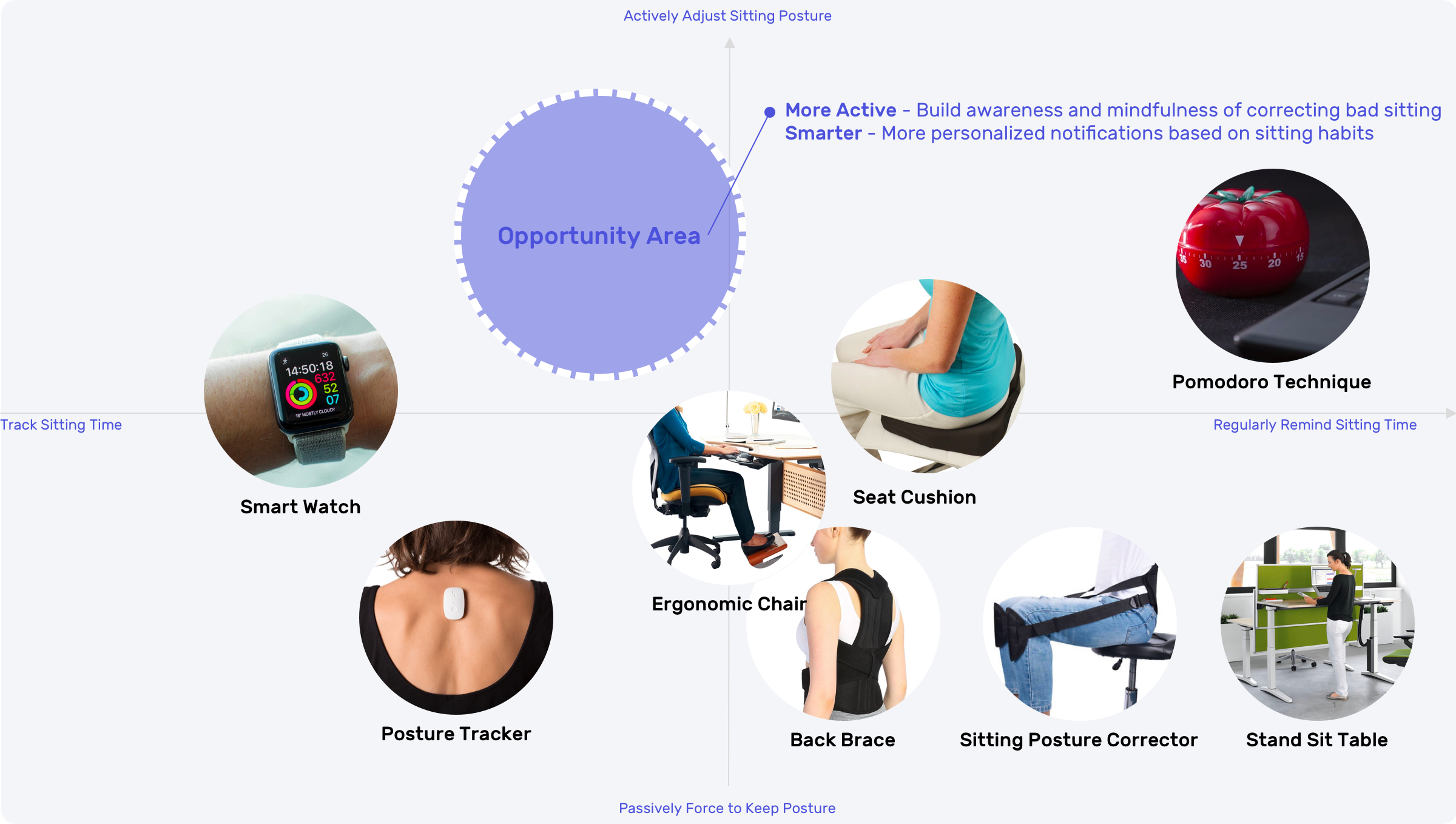
Persona

Explore
Design Challenge 1
When should I take a break?
Design Principles

User Journey Storyboard
Based on the research results, there should be 4 main stages in the user journey.
Set-up before using, and track, reflect, adjust while using.


Initial Feasibility Requirements
1. Track Time
2. Monitor Posture Changing
Feasibility Mapping and Initial Concepts

Concepts Testing and Results


Exploring Design Directions

Further Ideation

Defining Physical and Digital Interactions

Technical Plan

Design Challenge 2
How to pose in an ergonomically good way?
Education System
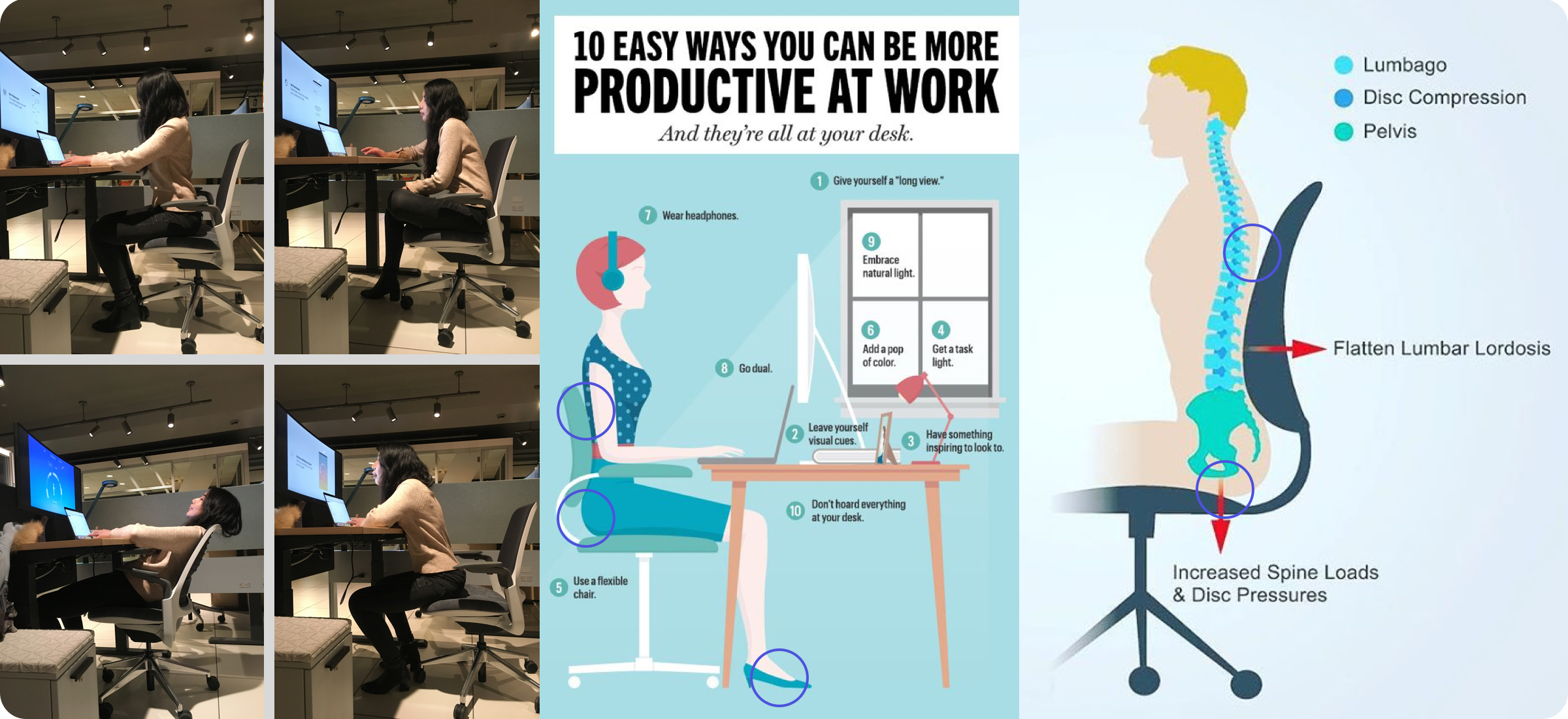
Currently, a lot of people have no idea about what a good sitting posture looks like because of outdated knowledge and old mental model. Leading by that, they couldn't pose correctly in the working environment while working focused.
Surprisingly, when looking up resources about how to sitting in a good way, there are some guidelines that are not consistent with people's current understanding. So I wonder if people really know how to adjust their sitting posture when they intend to help themselves.
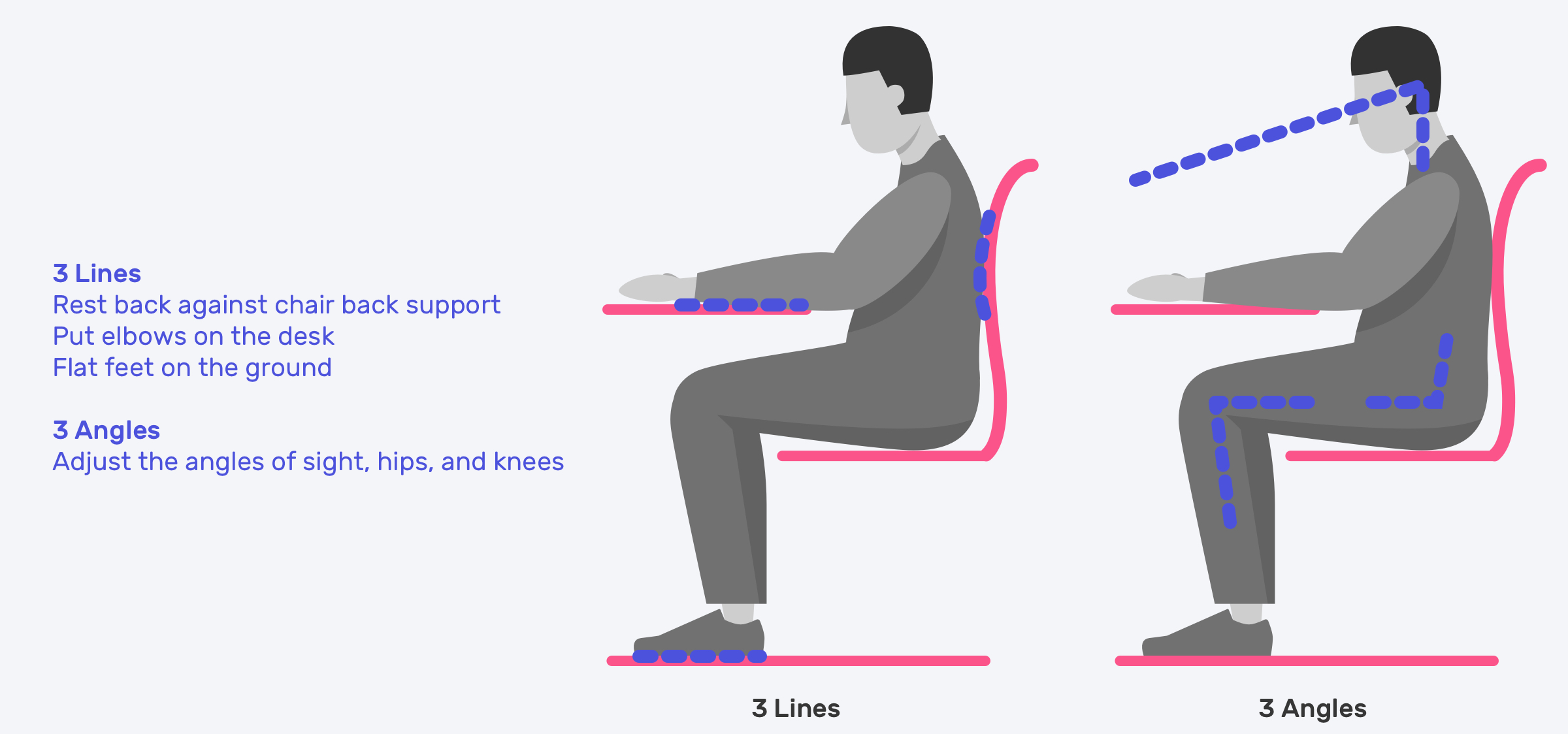
That's why I develop this mental model to help people to monitor themselves and adjust their posture by remembering and following 3 lines and 3 angles.
Design Challenge 3
How long could I sit comfortably until work ends?

Use Cases
Use Case 1
Claire unboxes smart pad and sets it up

She uses the package as a tripod and captures the side view to help pose better and record sitting standard while setting up.
Use Case 2
Claire is notified and takes a break

The pad tracks her prolonged sitting time brought by focused working and reminds her to take a break or to stretch regularly as pre-set.
Use Case 3
Claire received back pain prediction and adjusts behaviors to delay it

She records when she feels intolerant back pain happens to build the model and to change to a mobile work mode when receiving the prediction of back pain.
Use Case 4
Claire checks her reports and reflects

She checks sitting reports and reflects sitting behaviors, then change goals to build healthier sitting habits.
Finalized Features

Moodboard

Before finalizing the detailed design, I chose to build solutions by utilizing dark design patterns since it fits better in the focused working scenarios and saving more battery power which makes users feel secure to use them.
Physical Design
Prototyping

CMF Consideration

Engineering Details

Digital Design
Low-Fi User Flow and Motions


Visual Concepts

UI Explorations

Branding and VI system

Deliver
Solution: XIA
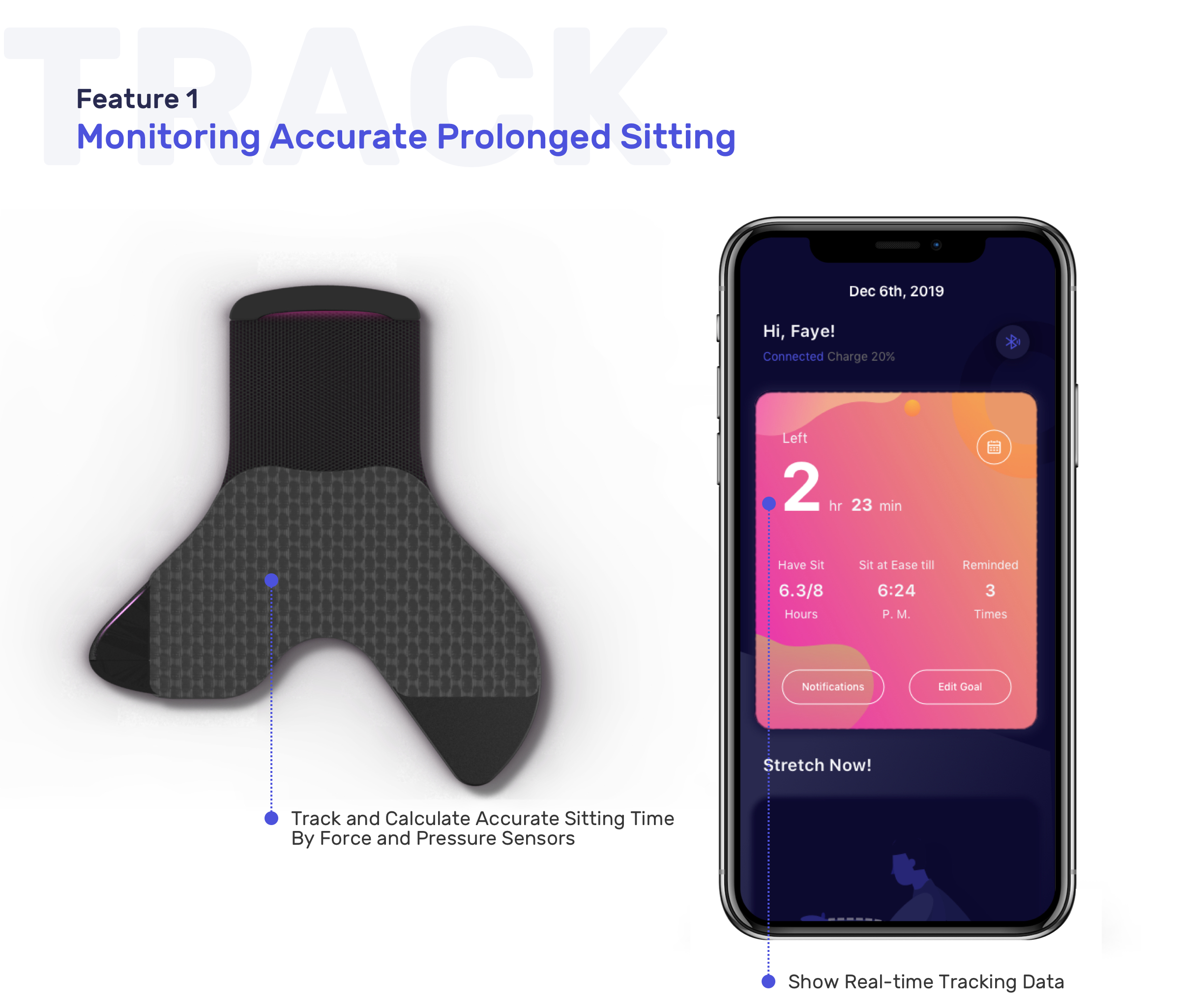


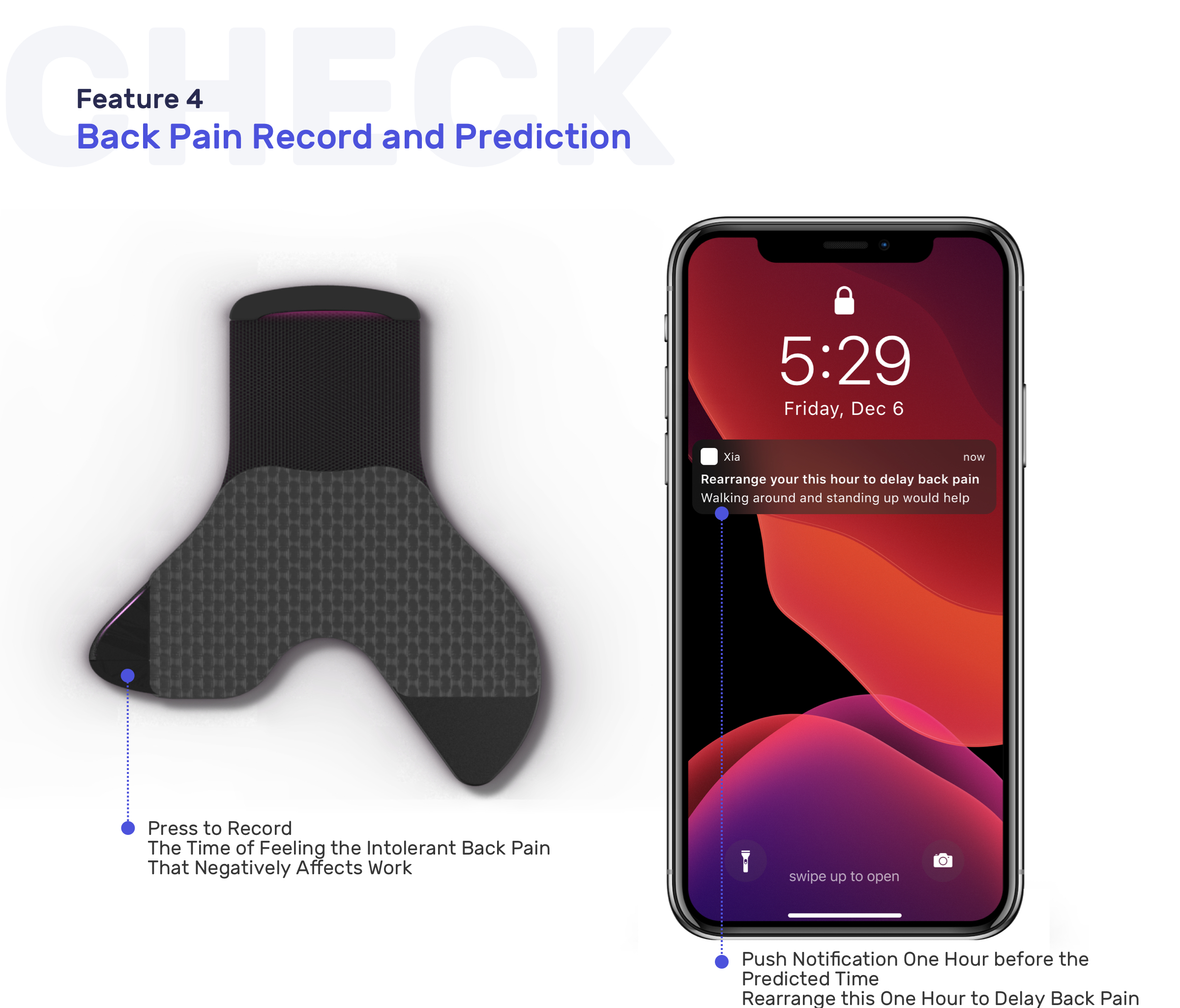


Thanks to instruction and support from Elisa Vargas (Motorola Solutions), Jim Wicks (Northwestern), Amy Schwartz (IDEO) on research, prototyping and reviewing during the design process.